
My initial interest in travel was driven by my background in architecture. I wanted to see how ancient cultures expressed their ideas and values in their architecture. I still desire that, but experience has expanded my horizons to consider the impacts of the geology and other natural phenomenon on both the culture and the architecture. Now I’m all about interesting and unusual places.
It’s much easier these days to even find out about such locals than it was before the internet, but traveling to remote places is harder and harder for me. So I’m taking you on trips to interesting places through others, their writing and
photography.
THE RAINBOW MOUNTAINS, CHINA
I had never heard of the Rainbow Mountains, much less aspired to go there, when I ran onto a reference stating that something was a colorful as the Chinese Rainbow Mountains. I had to know.
They are located in Zhangye Danxia Landform Geological Park which is in the Gansu province of northwest China. The 200 square mile site was designated as a UNESCO World Heritage Site in 2009. The park has been popular with Chinese tourists for years but only now becoming an attraction for foreign visitors.
The two maps show the location in China and how that country relates to surrounding countries. The region we are talking about is in yellow.
These mountains are composed of sedimentary rock, cretaceous sandstones and siltstones, deposited in more or less flat layers millions of years ago, on the bed of the ocean.
The deposits contained iron, trace minerals and organic matter. Fifty-five million years ago tectonic forces created the Himalayas Mountains as the Indian Tectonic Plate collided into the Eurasian Plate, folding the flat layers and thrusting them upward and exposing the sedimentary layers at weird angles.
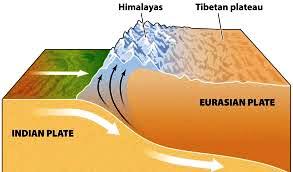
Image source: campbellhigh.org/ourpages/2017/

Before you peruse the photographs, which blew my socks off, a couple of points about our perception of color to keep in mind.
Let There Be Light
Newton observed that color is not inherent in objects. Rather, the surface of an object reflects some colors and absorbs all the others. The human eye perceives only the reflected colors.
Together, the human eye and brain translate light into color. When an object appears black, the object or surface is absorbing all wavelengths light. When we see white, the object is reflecting all wavelengths of light. When it appears as a particular color, the object is reflecting only one wavelength (which we perceive as a color) and absorbing all others.
My first point is that light (intensity, direction, etc.) makes the difference in how something looks.
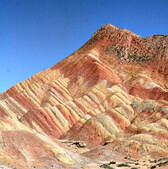
The other point is that photographers usually want a beautiful, or at least artistic, representation of the subject being photographed.
Cameras can be set to manipulate light. I’m not implying the photos are doctored, but they are probably taken at the best time of day in the right weather to get the most vivid colors. Standing there, you might see what appears in the photo to the right. The professional photographs will show the mountains at their most dramatic. It is all in the lighting.
Photo Credit: Tim Zachernuk - Photo Source: grist.org/stripey-mountain
EVERYTHING'S COMING UP RAINBOWS
| Photo source: travelercorner.com/rainbow-mountains This land is do dry that there are no plants on animals there. That’s dry. The hills consist of multi colored sandstone such as red, blue, green, brown and yellow. The primary color is a deep red sandstone. Weathering, mixed with water and oxygen oxidizes elemental iron into iron oxide, which is notable for its dark red coloring. The Rainbow Mountains are largely characterized by this iron oxide staining of its sandstone Danxia formation. |
Photo Source: forbes.com/2016/rainbow-mountains Photo source: facebook.com/photo?fbid=2328
MORE RAINBOWS
I was surprised to discover another range of Rainbow Mountains, this time located in the Andes of Peru, about two hours drive from Cusco. After all, rainbows exist around the world, so why not rainbow mountains.
Photo source: https://commons.wikimedia.org/w/index.php?curid=76653424
Vinicunca, or Winikunka, also called Montaña de Siete Colores, Montaña de Colores or Rainbow Mountain. Here there are seven colors due to mineralogical composition. Pink is red clay, mud and sand. The white comes from calcium carbonate, red from iron and clay. Green is a compound of phyllites and clays rich in ferro magnesian. Yellow due to sandstone rich in sulfurous minerals. The sources seem to rarely mention the blue coloration.
SO MANY WONDERFUL PLACES TO GO AND NOT ENOUGH TIME
Sources:
https://www.chinahighlights.com/zhangye/attraction/danxia-landform-geological-park.htm
https://www.forbes.com/sites/trevornace/2016/03/02/rainbow-mountains-china-earths-paint-palette/#4879b7db3e5e
https://www.huffpost.com/entry/rainbow-mountains-china-danxia-landform_n_3683840?guccounter=1&guce_referrer
http://inspire.lifepinner.com/2019/03/29/true-colors-of-china-rainbow-mountains/
https://www.architecturaldigest.com/story/rainbow-mountains-china
https://www.theguardian.com/world/gallery/2013/aug/01/rainbow-mountains-china-in-pictures
https://www.chinahighlights.com/zhangye/attraction/danxia-landform-geological-park.htm
https://www.theguardian.com/world/gallery/2013/aug/01/rainbow-mountains-china-in-pictures#/?picture=414163198&index=0
https://www.pantone.com/color-intelligence/articles/technical/how-do-we-see-color
https://www.minerals.net/resource/property/color.aspx
https://www.wonderopolis.org/wonder/how-do-rocks-get-their-colors
https://en.wikipedia.org/wiki/Zhangye_National_Geopark
https://csmgeo.csm.jmu.edu/geollab/Fichter/SedRx/color.html
https://weather.com/science/news/breathtaking-rainbow-rocks-china-20130710
Photos only:
https://www.facebook.com/photo?fbid=232810990695661&set=pcb.232812080695552
https://grist.org/living/zen-break-check-out-chinas-gorgeous-stripey-mountains/
https://in.musafir.com/blog/most-extraordinary-mountains-in-the-world.aspx
https://in.musafir.com/blog/most-extraordinary-mountains-in-the-world.aspx
https://www.flickr.com/photos/75515041@N06/10791466616
http://travelercorner.com/rainbow-mountains-zhangye-danxia-landform-china/
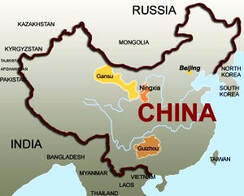
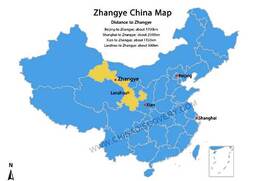
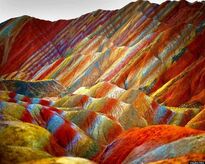
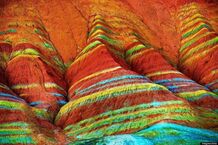
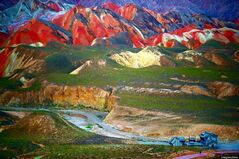


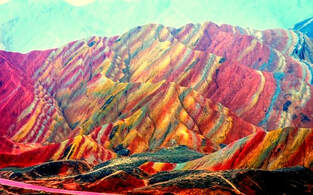
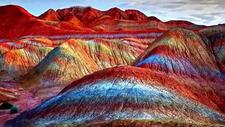
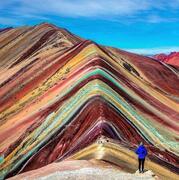

 RSS Feed
RSS Feed